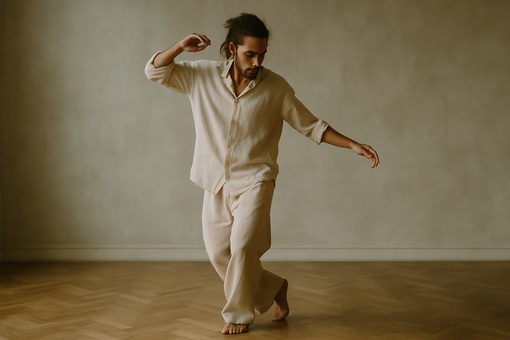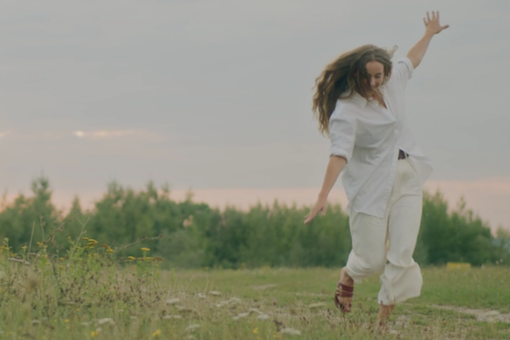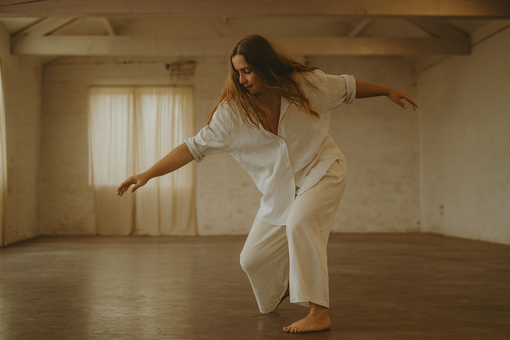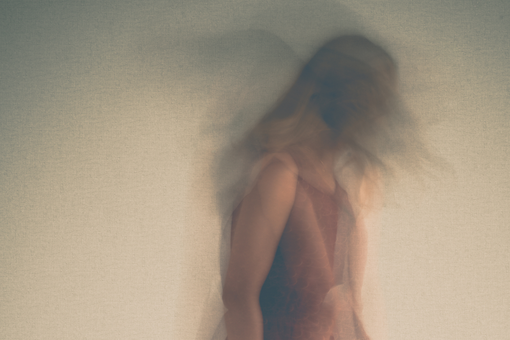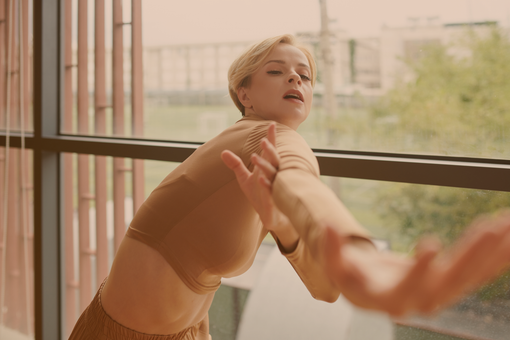
- Article published at:
- Article author: Aurélie Kouéta
- Article tag: danse thérapie
- Article comments count: 0
When the body speaks before words
We communicate well beyond verbal language. Postures, gestures, micro-movements, breathing, gaze: the body constantly transmits messages often more authentic than those expressed with words.
According to the work of Albert Mehrabian, up to 93% of our communication occurs through non-verbal means (intonation, gestures, expressions), compared to only 7% through pure verbal content. This does not mean that words do not matter, but that their meaning is always colored by the body language that accompanies them.
Movement, a reflection of inner states
In psychology, the body is considered a mirror of our internal states: stress, joy, anxiety, or confidence can be read in posture and body dynamics. For example:
🔵Hunched shoulders often indicate fatigue or withdrawal;
🔵A fast walking pace may reflect inner agitation;
🔵A smooth and deep breath generally indicates a certain serenity.
In NLP, these signals are called access cues: they help identify how a person experiences a situation (for example, whether they connect more with their emotions, mental images, or logical reasoning). The body thus becomes an entry point to understanding inner patterns.
Non-verbal communication: between consciousness and the unconscious
A large part of our body language escapes our awareness. We can choose our words, but much less our micro-expressions or spontaneous gestures. That is why the body is often perceived as more sincere than speech. It reveals what we truly feel, even when we try to mask it. This dimension is particularly explored in dance therapy, where movements become a way to decode and express emotional experiences that are sometimes inaccessible to words alone.
The body as a tool for emotional regulation
Body language is not just a reflection: it can also become a lever. Moving differently, changing posture, breathing more deeply directly influences our emotions and state of mind. Studies in neuroscience show that straightening one’s posture or adopting a deeper breath activates circuits of confidence and reduces the perception of stress. Thus, the language of the body also becomes a tool for inner transformation.
My support: listening to and freeing body language
In my support sessions, whether individual or group, I invite everyone to become aware of their body language and to use it as an ally rather than to endure it:
🔵Skills assessments integrating body listening to connect professional paths and personal alignment;
🔵NLP sessions to observe non-verbal signals and open new perspectives for communication and trust;
🔵Free dance workshops to release tensions, express what is unsaid, and transform blockages into fluid movements.
The idea is not to mechanically interpret gestures, but to offer a space for everyone to listen to what their body is saying — and learn to use it as a resource.
Towards more authentic communication
The language of the body is not an addition, but the heart of our communication. Recognizing it opens the way to more authentic exchanges, a better understanding of oneself and others, and improved relational and emotional well-being.
And what if, instead of always searching for the right words, you began to listen to the silent messages your body sends you?
Learn More

